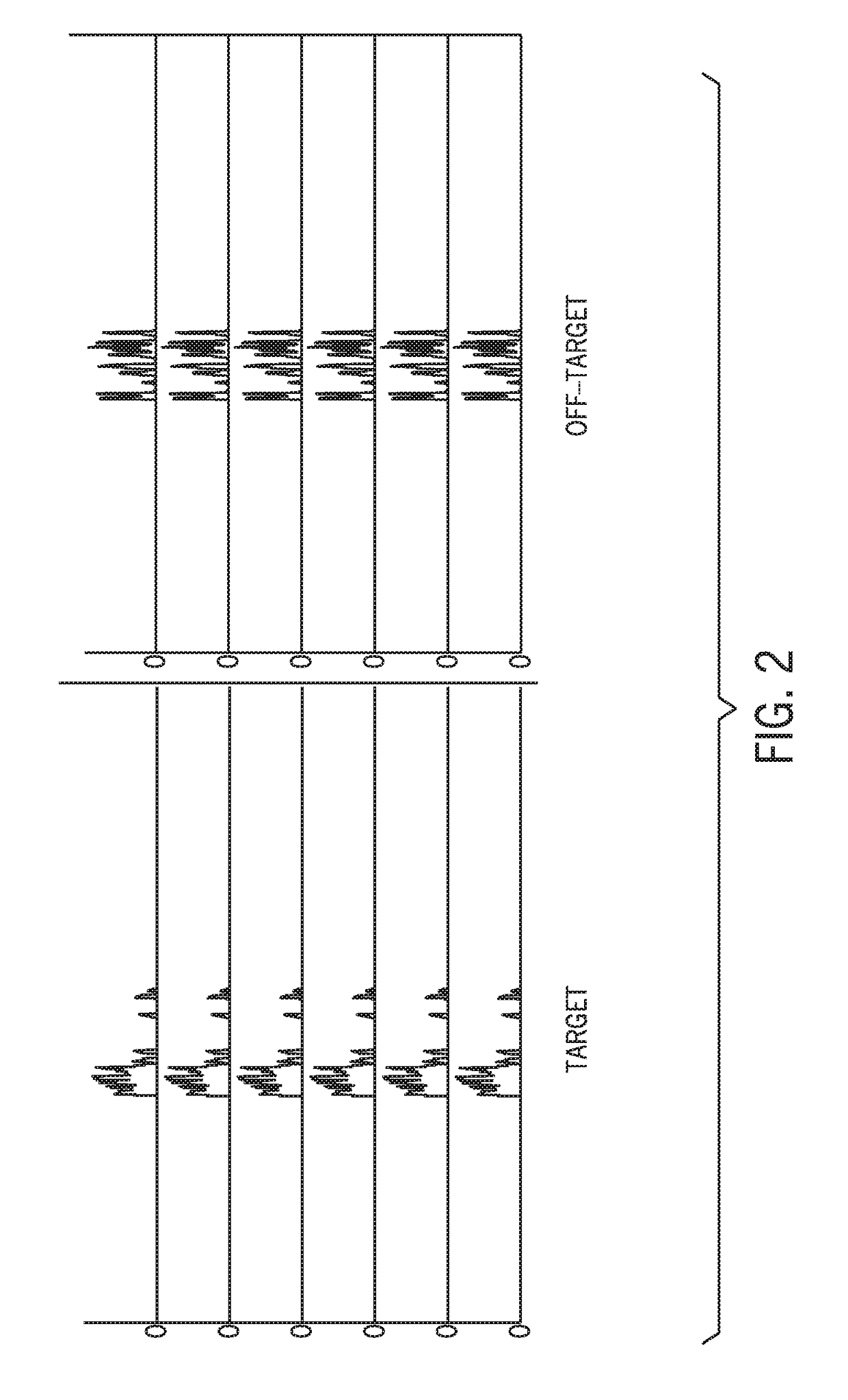Off-target capture reduction in sequencing techniques
a sequencing technique and sequencing technology, applied in the field of nucleic acid sequencing techniques, can solve the problems of reducing reducing the efficiency of certain hybrid capture methods, and wasting sequencing yield, so as to reduce the capture rate of off-target sequences and improve the specificity of the target hybridization prob
- Summary
- Abstract
- Description
- Claims
- Application Information
AI Technical Summary
Benefits of technology
Problems solved by technology
Method used
Image
Examples
Embodiment Construction
[0030]Hybrid capture methods in which target sequences are selected via binding by hybridization probes are associated with a high off-target binding rate and low on-target specificity. The present techniques improve sequencing efficiency by reducing the presence of off-target sequences in a hybrid capture sequencing workflow using a data-guided approach. While certain techniques may use blockers or binding attenuators to influence probe binding, such approaches are not data-guided. For example, salmon sperm DNA may be used to prevent non-specific binding of probes to reaction surfaces. However, nonspecific blockers do not prevent the binding of target-specific probes to off-target sequences with similarity to target sequences. Target-specific probes have specificity for their intended targets. However, sequences present in off-target regions may be sufficiently similar to the target sequences (e.g., having short stretches of homology with the target, high string similarity) to perm...
PUM
| Property | Measurement | Unit |
|---|---|---|
| time | aaaaa | aaaaa |
| lengths | aaaaa | aaaaa |
| nucleic acid sequencing | aaaaa | aaaaa |
Abstract
Description
Claims
Application Information
 Login to View More
Login to View More - R&D
- Intellectual Property
- Life Sciences
- Materials
- Tech Scout
- Unparalleled Data Quality
- Higher Quality Content
- 60% Fewer Hallucinations
Browse by: Latest US Patents, China's latest patents, Technical Efficacy Thesaurus, Application Domain, Technology Topic, Popular Technical Reports.
© 2025 PatSnap. All rights reserved.Legal|Privacy policy|Modern Slavery Act Transparency Statement|Sitemap|About US| Contact US: help@patsnap.com



